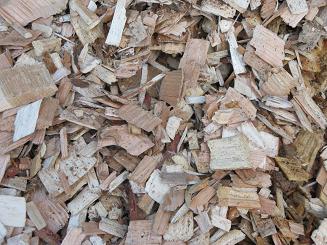Growing trees for energy can also enhance soil quality. In comparison with agricultural feedstocks, trees are typically grown from 20 to 90 years before they are harvested. During this time, their roots and leaf litter help stabilize and enrich the soil. Some tree species can even sprout back from the stump after they are harvested. Using trees that can regenerate naturally may reduce the need for tilling and planting thereby reducing soil erosion.
Typically, harvesting woody biomass involves removing tree trunks and large branches and leaving stumps, roots, and leaves. Ensuring that leaf litter remains in the forest helps maintain soil quality because about one-third of a tree’s nutrients are contained in its leaves or needles (Moller IS 2000). Wood production generally places less intense demands on soil nutrients than agricultural production. For instance, growing and harvesting corn (either grain or stalks) removes over 89.27 lbs of nitrogen per acre annually, while growing and harvesting loblolly pines removes about 4.46 lbs of nitrogen per acre. Furthermore, although the cost of trucking and spreading it might be a deterrent, ash from wood-fired power plants, when put back into the forest, may provide sufficient nutrients to alleviate nutrient loss from harvest, depending on the soil type.
Soil quality can also be affected by physical disturbance and compaction. Roads and heavy machinery used during harvesting may lead to increased soil compaction, erosion, and water runoff. Runoff can contaminate nearby water bodies with soil, silt, and chemicals. Minimizing the area disturbed by heavy machinery and scheduling a harvest when soils are dry or frozen can reduce these impacts. There are a number of well-established best management practices for harvesting that help protect soil. Again, proper management practices can help maintain soil quality and sustain forest productivity.
References
- Moller IS. 2000. Calculation of Biomass and Nutrient Removals for Different Harvesting Intensities. New Zealand Journal of Forestry Science. 30(1-2): 29-45.
